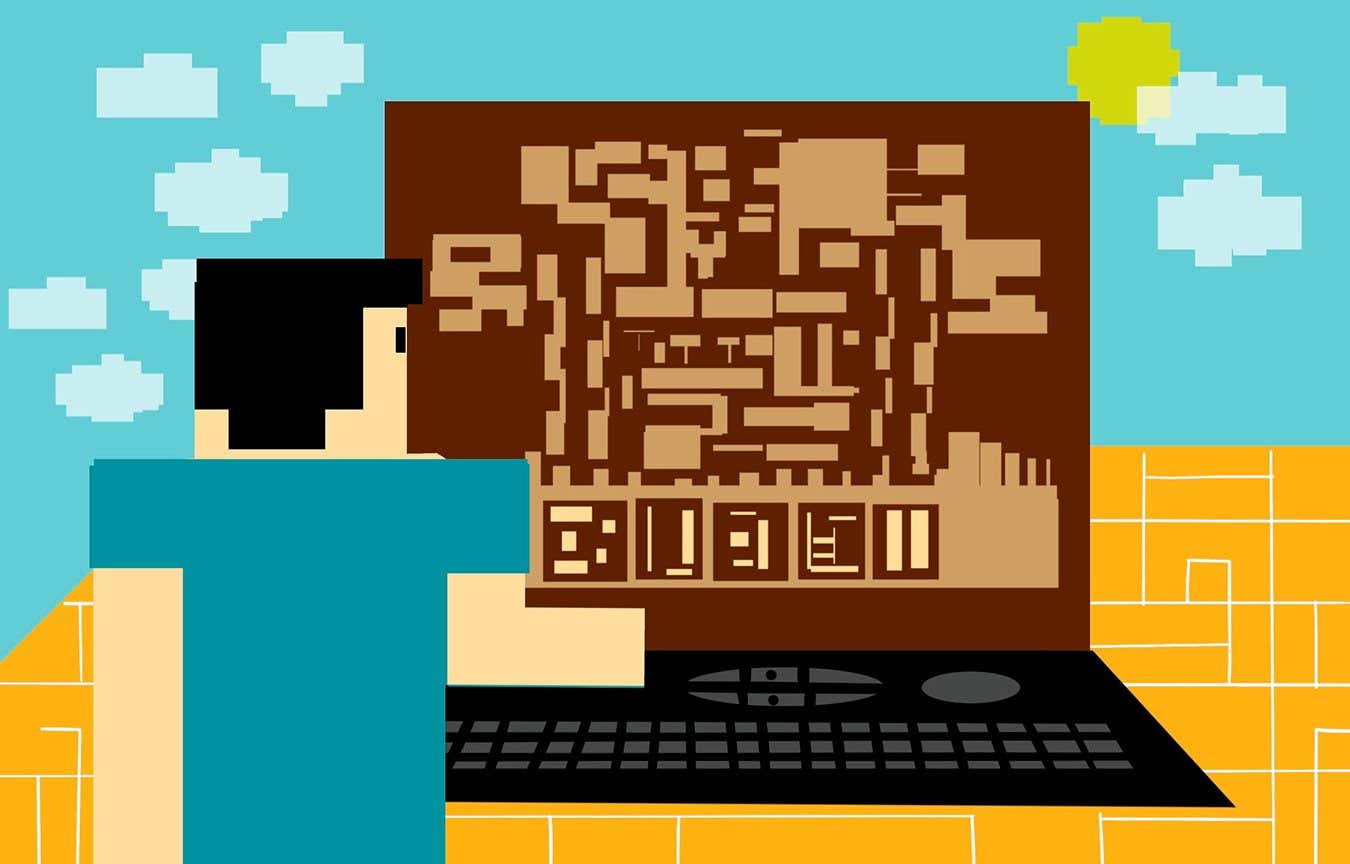

Feedback is New Scientist’s popular sideways look at the latest science and technology news. You can submit items you believe may amuse readers to Feedback by emailing feedback@newscientist.com
Digging in
There are few things Feedback appreciates more than a truly committed hobbyist: someone who happily spends months or even years building something that is of no practical use whatsoever, just to be able to look at it or play with it.
So, then, to the online world of Minecraft. For those who might be unfamiliar, Minecraft is an open-world game in which everything is made up of cubical blocks. Players dig into the ground to collect cubes of useful minerals, which they can use to build things. For instance, they might build a house so that the monsters that come out at night can’t get them.
Or they might go big. Really big. Feedback is fond of a group called Minecraft Middle Earth (shouldn’t that be Minecraft Middle-earth?) whose members have constructed some of the biggest locations from J. R. R. Tolkien’s stories, like Minas Tirith and the mines of Moria (of course). The group says its map of Middle-earth has an area of 29,000 by 30,000 blocks.
In terms of sheer scale, a Minecraft project of an entirely different sort by YouTuber sammyuri is puny by comparison, with a volume of a mere 1020 x 260 x 1656 blocks. But it is impressive in another way: it’s a large language model (LLM), like ChatGPT or Claude. Sammyuri has inevitably called it CraftGPT.
The YouTuber built CraftGPT using redstone, which in the game is a mineral that behaves like electrical circuitry and can be used to build mechanisms. Most players use redstone to make simple things like traps for monsters, but sammyuri has taken it and run with it. In fact, in a meta twist, they previously built a crude version of Minecraft within Minecraft.
Their new construction starts with a keyboard and screen, allowing players to enter prompts and see the model’s responses. Behind that is a towering array of redstone blocks, like a city with hundreds of skyscrapers. They are configured to mimic the components of an LLM, like a tokeniser, a KV cache and a rectified linear unit (ReLU).
All of this enables CraftGPT to conduct conversations like: “Hello, how are you today?” “I am feeling quite happy today, thank you for asking.” It can correctly tell you that the sky is blue and that fruits are healthy to eat. When sammyuri asked, “Did you know you are a machine?” CraftGPT responded “Yes, I think it is quite interesting, especially with new technology and technology”. This led sammyuri to wrily conclude that CraftGPT “probably” doesn’t know it’s AI.
On the one hand, nobody could accuse sammyuri of false modesty about this. Their video on CraftGPT begins with a text warning that “some viewers… may suffer adverse effects including but not limited to having their minds blown in spectacular fashion”. However, they do go on to say that CraftGPT is “technically a ‘small language model’ given it’s only got 5 million parameters; that was about as much as my poor old laptop could handle.”
Feedback found ourselves staring glassy-eyed at the huge arrays of redstone, which are necessarily repetitive. Hugely, stunningly repetitive. We can’t imagine how boring it was to build them.
It’s a me!
While we’re on the subject of video games, Feedback recently became aware of a major shakeup in the gaming world. The president of Nintendo America is stepping down at the end of the year after almost a decade in his post. That’s 10 years of supervising new Mario games, in which the jumpy Italian plumber faces off against Bowser the giant evil tortoise and his armies of Koopa Troopas and Goombas, all to safeguard Princess Peach and her bafflingly undefended Mushroom Kingdom.
But perhaps it was always meant to be, given the soon-to-be-ex-president is called Doug Bowser.
Reinventing the paper
At this point, Feedback is pretty wise to the technology hype machine. There’s only so many times you can read claims that some “game-changing” start-up company is “disrupting” a sector of the economy by “revolutionising” how some task or other is performed, before you become suspicious.
So, to a truly disruptive new technology, a “minimalist, paper-based to-do manager” reviewed highly positively by both The New York Times and Wired in the last year. Known as Analog and produced by a company called Ugmonk, it is intended to replace online task-management tools, so that you can work offline without the distractions of social media. It is a wooden block that sits on your desk, with a bunch of lined white cards with bullet points for you to fill in your tasks.
In other words, it’s some index cards and a piece of wood. The NYT‘s reviewer called it “delightfully old-school”. She did anticipate the obvious question: “Why not just use a notebook, right?” However, such approaches “have never worked” for her, whereas “the Analog system speaks to my Gemini spirit, allowing me to feel both professionally serious and surprisingly free.”
An Analog starter kit will set you back £75. Then you need to keep buying the cards. An annual refill will normally cost £141, but there is an alternative: Ugmonk helpfully allows you to take out a monthly subscription to get a regular supply. Yes, it’s yet another example of a company trying to sucker you into paying them money every month for a service you probably won’t use but will forget to cancel.
Feedback is, by the way, aware of the irony of pointing this out while also being part of a magazine that sells subscriptions. You don’t need to write in to tell us.
Got a story for Feedback?
You can send stories to Feedback by email at feedback@newscientist.com. Please include your home address. This week’s and past Feedbacks can be seen on our website.



